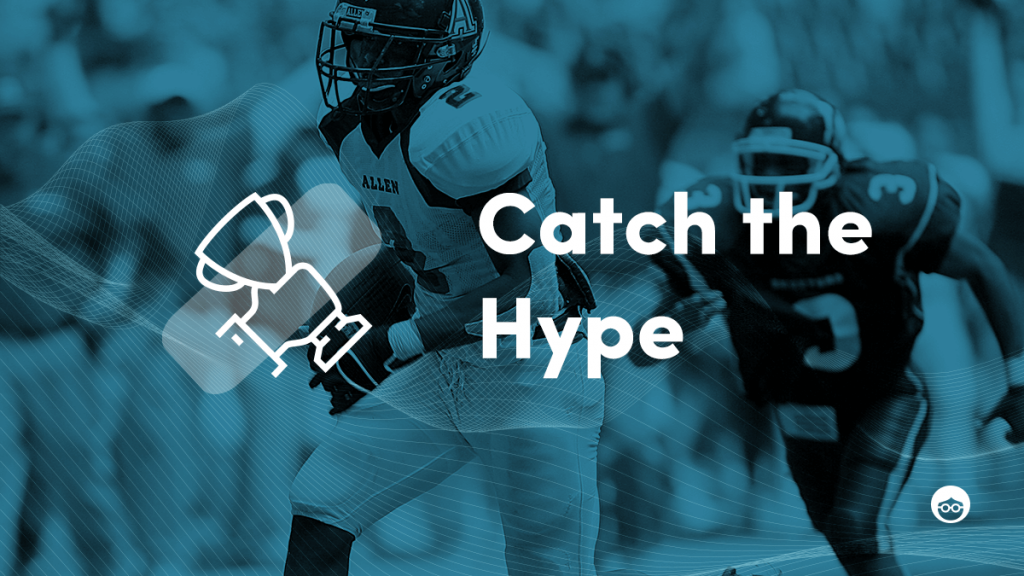
Marketing guru Gary Vaynerchuck is a fan of TV commercials on Super Bowl night. For one united moment, the public is literally waiting for the ads to finally appear, and on the rare occasion, an entire country can be moved with just one short clip. For creative agencies, the Super Bowl spot is the most coveted and significant of all – brands use the commercials, or “anchor videos” as Vaynerchuck calls them, to define how they want the public to perceive them. So what can marketers who don’t have the huge budget necessary to land the top spot learn from the Super Bowl? Can the Super Bowl tactics be applied to traditional marketing campaigns?
One hit wonder vs. campaign
Some brands rely on the element of surprise and celebrity to make a splash at the Super Bowl. In that case, the video may well stand on its own, sometimes giving explicit reference to the Super Bowl, or marking the starting point of a longer TV campaign. However, the ad will be most effective if hype is built before the event and the brand also has a post-event strategy to translate awareness into engagement. Many brands release teasers leading up to the Super Bowl that build excitement and anticipation, much like trailers for feature films. Digital experiences take this a step further and expand the impact of the Super Bowl appearance.
Currently, halftime show sponsor Pepsi has released an app that allows fans to win a seat at the Super Bowl in advance. Food brand Avocados from Mexico developed a virtual house where football pro Drew Brees is available for virtual selfies, fans can get recipes and discounts, and enter a month-and-a-half(!) long sweepstakes with weekly prizes. Ideally, this creates a buzz around the brand even before the event.
Ideal opportunity for a broad outreach
In addition to digital campaigns specifically tied to the Super Bowl, the campaigns worth noting are those that take advantage of the reach of the annual sporting event, targeting viewers broadly. In 2020, Hollywood star Winona Ryder returned to her namesake town of Winona, Minnesota for website builder Squarespace, taking photos of her trip and creating her first website. Fans could visit her website, and enjoy other opportunities for engagement, such as a sweepstakes and a limited-edition photo book that could be purchased through the website’s store, another Squarespace feature. In this case, the product was clearly the star.
The Winona campaign is a perfect example of creativity, star power, and empathetic appeal to Squarespace’s large target audience. Winona represents rural America, whose businesses don’t tend to stand out on mainstream digital media. In fact, Winona residents were also given the opportunity to create a free website themselves with Squarespace as part of the campaign.
Is the hype around the Super Bowl real?
One example of the impact a campaign can generate even before the Super Bowl is, of all things, Mercedes’ failed “Last Fan Standing” contest in 2018. The idea of giving away a Mercedes vehicle to the fan who kept their finger on the virtual model the longest in the associated app during the game was so well received that the app couldn’t handle the traffic and simply collapsed. The vehicle was raffled off in the aftermath, leaving fans disappointed and marketers affirmed on just how much buzz a brand can garner around the Super Bowl.
What does a ‘Super Bowl-style campaign’ look like without a Super Bowl?
Few brands can afford to make an appearance at the Super Bowl. But they can create an anchor video themselves, to help redefine the perception of the brand. If one of the spots goes viral, this might lead to excellent performance results as well.
Vaynerchuck gives the example of the Dollar Shave Club brand, whose video resulted in 12,000 signups in the first 48 hours after release.
Since virality of videos can hardly be planned, and even inexpensive videos represent a major cost factor for many medium-sized companies, these spots should not be published with “hope” as the main strategy. They must be part of a broader digital strategy. The message and design of advertising materials and landing pages should all be aligned and published on multiple channels at the same time so as to maximize exposure and opportunities for brand recognition. Even in the awareness phase, engagement and performance should be considered in order to successfully guide users through the funnel early on and achieve good ROAS values. Contests, discount promotions, or the integration of social activations can be suitable tactics for this.
If marketers think about media planning right from the beginning, campaigns based on “anchor” videos can achieve great results, even without the hype of the Super Bowl.